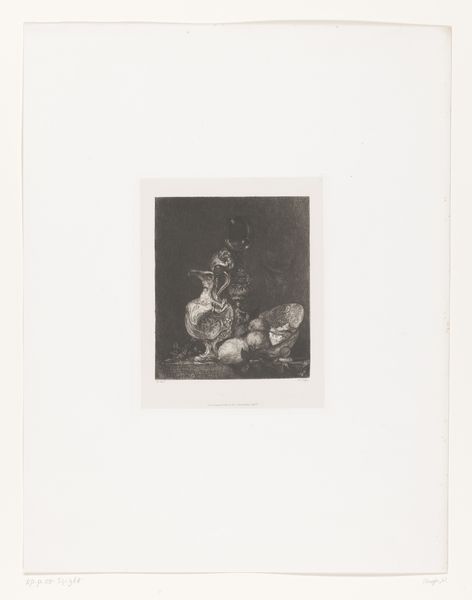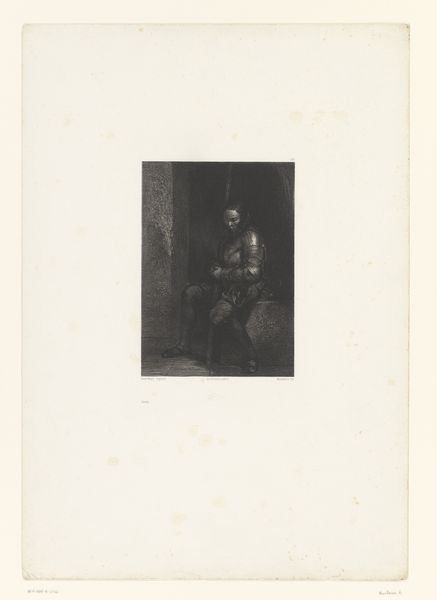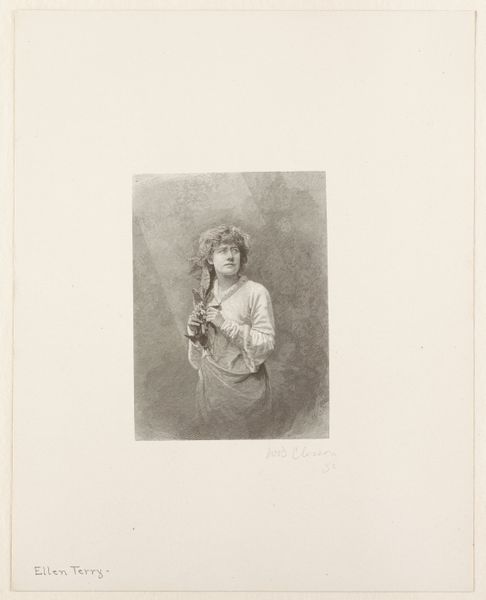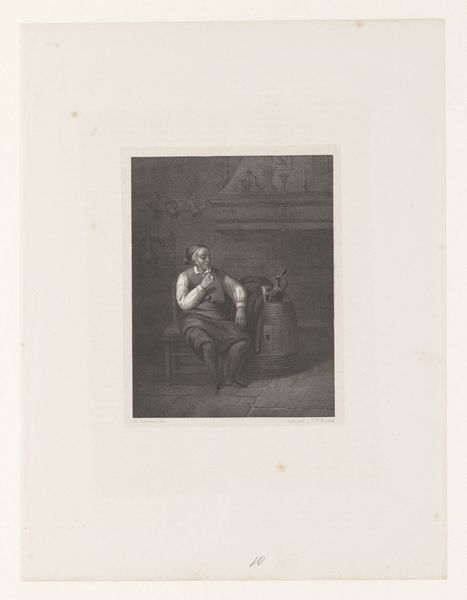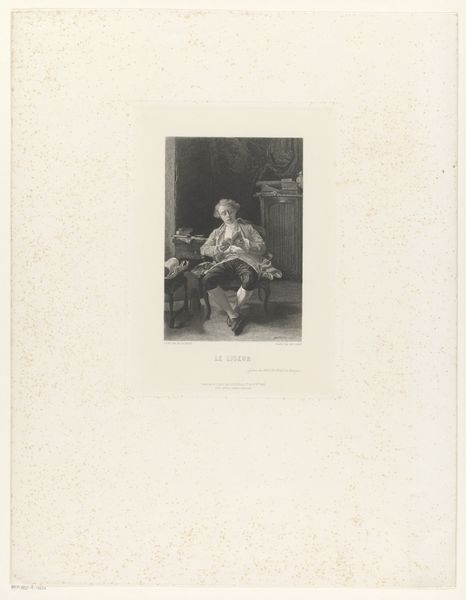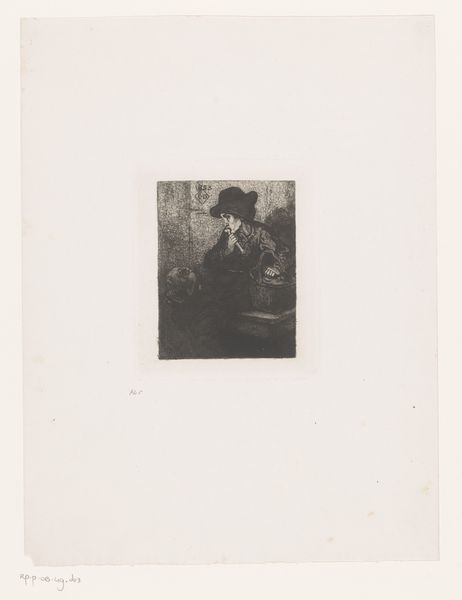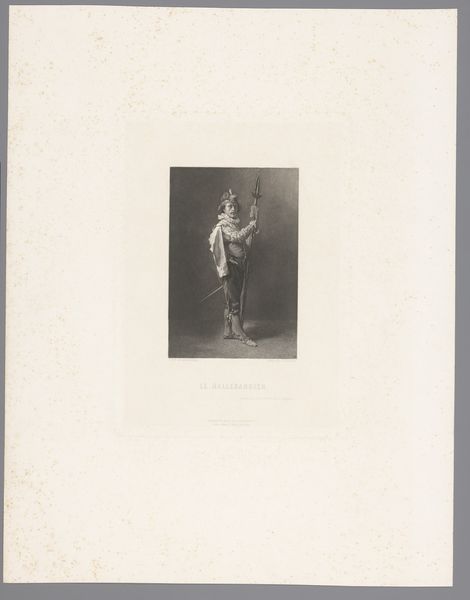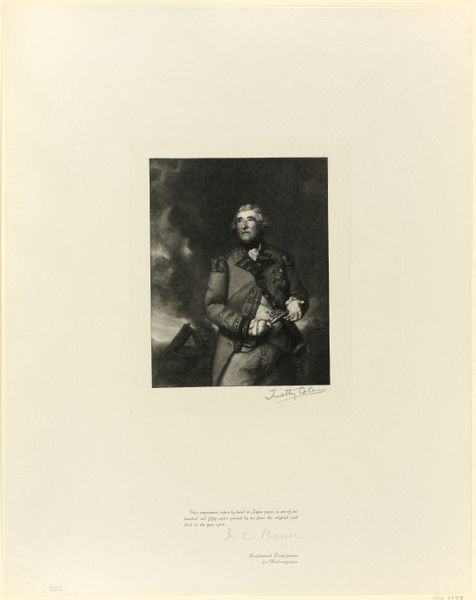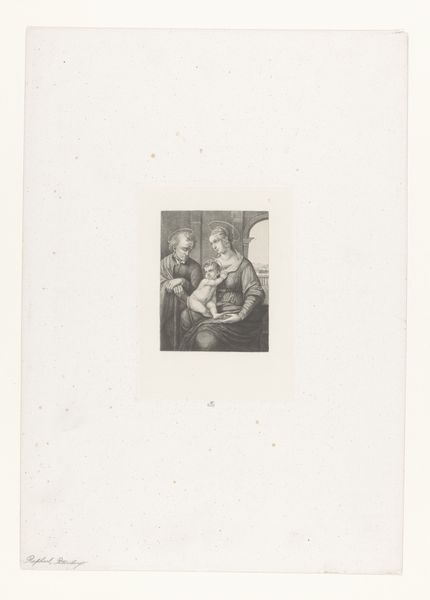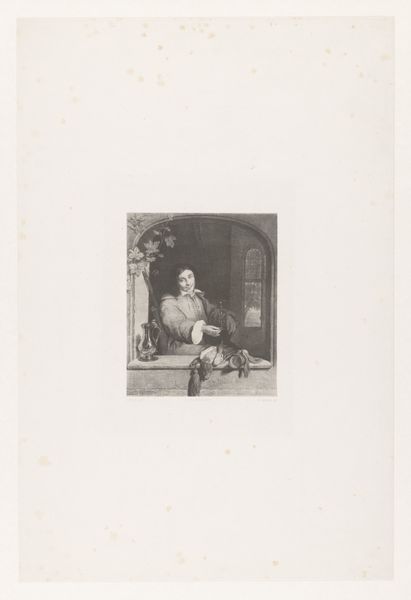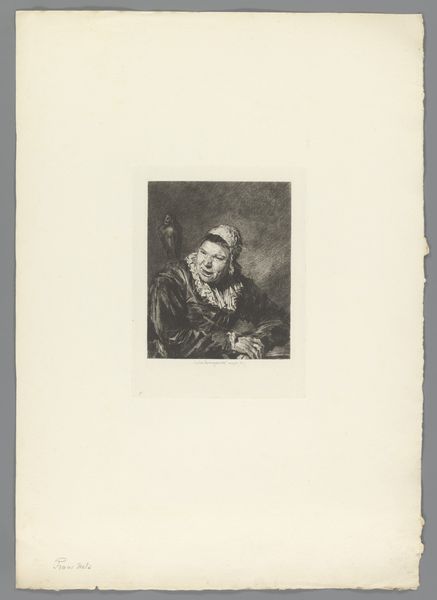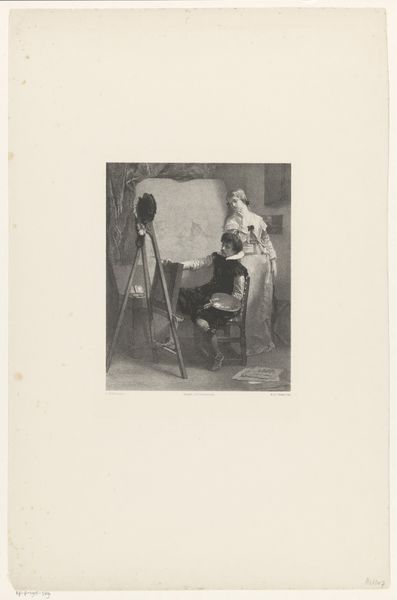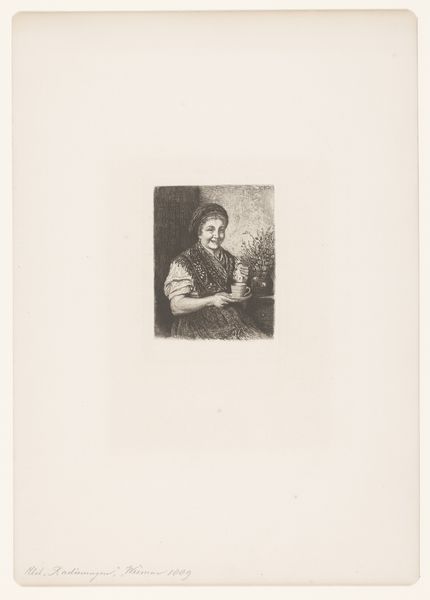
print, etching
#
portrait
# print
#
etching
#
romanticism
#
genre-painting
Dimensions: height 447 mm, width 314 mm
Copyright: Rijks Museum: Open Domain
Editor: So this etching by Armand Leleux, titled "Singing Guitar Player" from around 1840, feels like a really intimate glimpse into someone's life. It’s quite dark, but in a cozy way. What grabs your attention most when you look at it? Curator: For me, it's the way Leleux uses this genre scene to engage with popular ideas about romanticism and national identity in the 19th century. This musician becomes a symbol. We need to think about who is buying this image. Editor: How so? What symbol is being promoted here? Curator: The scene normalizes and romanticizes a certain image of the common person – the folk musician. Think about the rise of nationalism during this period, and how folk culture was often co-opted to create a sense of shared heritage. The art market at the time created demands. Do you think that this is pure representation? Editor: No, you're right, it's definitely constructed. This print is deliberately evoking a feeling, selling a narrative. Did Leleux produce these to make political statements, or just to sell in the market? Curator: I imagine Leleux understood the market, but maybe also felt some genuine connection to this image of the folk musician. This is a print so its public reach would've been broad and this helped circulate this idea about the beauty and simplicity of ordinary life in the burgeoning print market of the time. So many buyers would acquire, collect and share these images. What do you think about this wide public access? Editor: I suppose the reach of these sorts of prints helped solidify certain romantic visions, for better or worse. This has helped me reconsider this artwork’s public life in its original historical moment. Curator: Indeed!
Comments
No comments
Be the first to comment and join the conversation on the ultimate creative platform.
